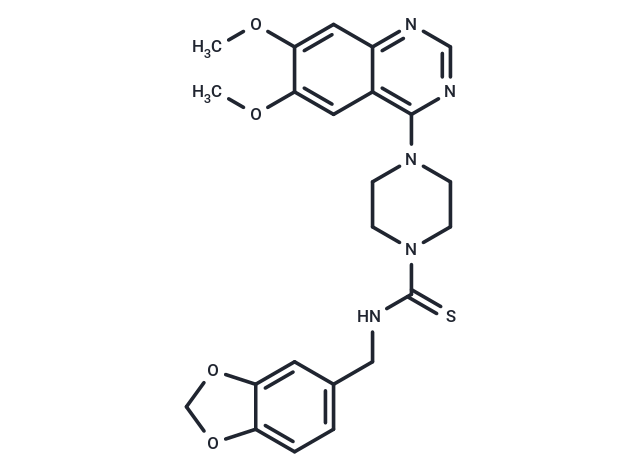Shopping Cart
- Remove All
 Your shopping cart is currently empty
Your shopping cart is currently empty

CT52923 is a selective, orally active antagonist of platelet-derived growth factor receptor (PDGFR), functioning as an ATP-competitive inhibitor. It has versatile applications for researching pathological diseases such as atherosclerosis, glomerulonephritis, liver cirrhosis, pulmonary fibrosis, and cancer.

| Pack Size | Price | Availability | Quantity |
|---|---|---|---|
| 10 mg | $40 | In Stock | |
| 25 mg | $82 | In Stock | |
| 50 mg | $133 | In Stock | |
| 100 mg | $202 | In Stock | |
| 1 mL x 10 mM (in DMSO) | $32 | In Stock |
| Description | CT52923 is a selective, orally active antagonist of platelet-derived growth factor receptor (PDGFR), functioning as an ATP-competitive inhibitor. It has versatile applications for researching pathological diseases such as atherosclerosis, glomerulonephritis, liver cirrhosis, pulmonary fibrosis, and cancer. |
| In vitro | CT52923 inhibits PDGFRs and stem cell factor receptors with IC50 values of 100 to 200 nM. CT52923(0.01-30 μ M; 24 h) blocks smooth muscle cell migration or fibroblast proliferation induced by platelet-derived growth factor, IC50 is 64 and 280 nM respectively [1]. |
| In vivo | CT52923 (oral; 5,15,30 and 50 mg/kg; twice daily) significantly inhibits the formation of neointima after carotid artery injury in rats [1]. |
| Molecular Weight | 467.54 |
| Formula | C23H25N5O4S |
| Cas No. | 205256-55-9 |
| Smiles | COc1cc2ncnc(N3CCN(CC3)C(=S)NCc3ccc4OCOc4c3)c2cc1OC |
| Relative Density. | 1.370 g/cm3 (Predicted) |
| Storage | Powder: -20°C for 3 years | In solvent: -80°C for 1 year | Shipping with blue ice. | |||||||||||||||||||||||||||||||||||
| Solubility Information | DMSO: 60 mg/mL (128.33 mM), Sonication is recommended. | |||||||||||||||||||||||||||||||||||
Solution Preparation Table | ||||||||||||||||||||||||||||||||||||
DMSO
| ||||||||||||||||||||||||||||||||||||

Copyright © 2015-2025 TargetMol Chemicals Inc. All Rights Reserved.